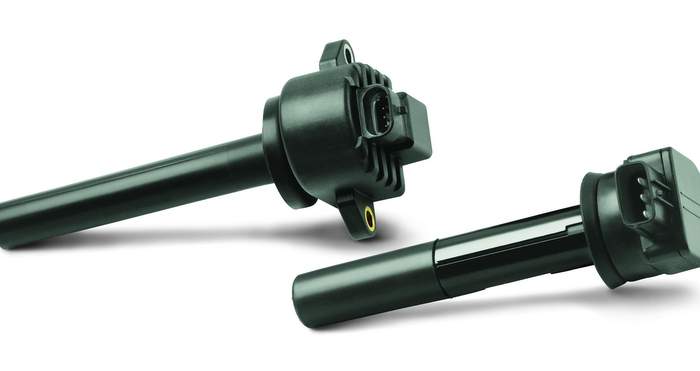
After a faulty ignition coil is diagnosed and replacement is determined, best practices are essential. Here is a list of tech tips when performing ignition coil replacements.
• Coils shouldn’t have any visible damage and the boot should be fully seated. While assembling coils to the engine, disregard the coil if you notice any visible damage like a cracked coil housing, broken anti-rotational tabs or broken connector. Any damaged part could lead to a premature failure, and a poorly seated boot could lead to engine misfire.
• Never remove or disassemble the boot from the coil. Disassembling the boot from the coil could lose the spring and/or suppressor and lead to engine misfires and RFI noise.
• Do not scratch the HV towers or the coil housing. Scratching the coil body could lead to a cracked case and cracked HV tower, which would lead to arc thru and coil failure.
• Never strike any part of the ignition system with a tool or other object. This can lead to physical damage (micro-cracking that can’t be seen), which can cause a system malfunction or failure. Similarly, never use hammers or other striking devices to install a plug wire to the coil HV tower. Installation of the plug wire to the coil HV tower should be done by hand. The striking process could induce micro-cracking at the coil HV tower and could deform or damage the plug wire terminal and lead to premature failure.
• Don’t apply any non-approved material to the surface of the high voltage tower that mates with the high voltage secondary leads. This can jeopardize the seal integrity of the mating surfaces, which in turn can create a secondary high voltage leak path and carbon tracking.
• Don’t permit paint or other sprayed materials to be sprayed onto the electrical connectors. Insulating-type spray can create a high resistance or open connection. Conductive-type spray can create an electrical short condition.
• Always apply the specified torque to the specified mounting thru-bolt. Loose thru-bolts could lead to failure under vibration. Overtightened thru-bolts could lead to cracked coil mounting ear and/or premature thru-bolt failure.
• Don’t support the ignition system by the wiring harness or plug wire. These leads are not designed to support the weight of the ignition system. Doing this can create a poor electrical connection or a disconnection that causes the system to fall and be damaged.
• Never force feed the engine wire harness mating connector into the coil connector. Always ensure the mating connectors are entirely seated and the locking mechanism is engaged. A snap should be heard and felt upon a good connection. This maintains a proper connection and prevents intermittent electrical connections leading to an improper ignition system operation.













